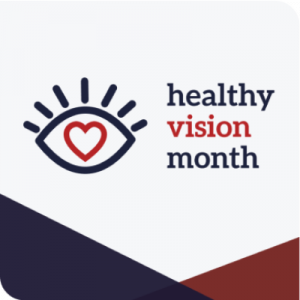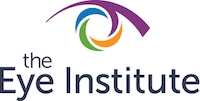
Welcome to May, the month where we celebrate Healthy Vision Month! As we embark on this month-long journey of raising awareness about the importance of eye health, the Eye Institute is thrilled to join the cause. Our vision is a precious gift, and it’s crucial to take proactive steps to maintain it. In this blog post, we’ll explore the significance of Healthy Vision Month and share valuable tips, supported by facts from the American Academy of Ophthalmology, to help you safeguard your eyesight for years to come.
Why Healthy Vision Month Matters: Healthy Vision Month is more than just an annual observance; it’s a reminder of the critical role that vision plays in our daily lives. Our eyes enable us to experience the world around us, from admiring breathtaking landscapes to connecting with loved ones through meaningful eye contact. According to the American Academy of Ophthalmology, approximately 75% of adults use some form of vision correction, highlighting the prevalence of vision issues in society. However, many people often overlook the importance of regular eye care until they encounter vision problems. By dedicating the month of May to promoting eye health awareness, we can empower individuals to prioritize their vision and take proactive measures to preserve it.
Tips for Maintaining Optimal Eye Health:
- Schedule Regular Eye Exams: Routine eye exams are essential for detecting potential eye conditions early on, even if you’re not experiencing any symptoms. According to the American Academy of Ophthalmology, comprehensive eye exams can detect signs of serious health conditions. By scheduling regular eye exams, you not only monitor your vision but also safeguard your overall health.
- Protect Your Eyes from Harmful UV Rays: Exposure to ultraviolet (UV) rays from the sun can increase your risk of developing eye conditions such as cataracts, macular degeneration, and even eye cancer. According to the American Academy of Ophthalmology, whenever you’re outdoors on a sunny day or cloudy day, wear sunglasses that offer 100% UV protection. Additionally, consider wearing a wide-brimmed hat for added protection against UV radiation.
- Maintain a Balanced Diet: Nutrition plays a crucial role in supporting eye health. According to the American Academy of Ophthalmology, a diet rich in antioxidants, vitamins, and minerals can help reduce the risk of age-related eye diseases such as macular degeneration and cataracts. Incorporate foods such as leafy greens, colorful fruits and vegetables, fish high in omega-3 fatty acids, and nuts into your diet to nourish your eyes and promote long-term vision health.
- Practice Proper Eye Hygiene: Simple habits like washing your hands before touching your eyes, avoiding rubbing your eyes excessively, and following proper contact lens care can help prevent eye infections and irritation. According to the American Academy of Ophthalmology, practicing good hygiene can reduce the risk of common eye conditions such as conjunctivitis (pink eye) and corneal infections. Additionally, if you spend long hours in front of digital screens, remember to take regular breaks to give your eyes a rest and reduce the risk of digital eye strain.
Conclusion: During Healthy Vision Month, let’s commit to prioritizing our eye health and spreading awareness within our communities. By incorporating these tips into our daily lives, supported by facts from the American Academy of Ophthalmology, we can take proactive steps towards maintaining optimal vision for years to come. Remember, your eyesight is irreplaceable—let’s cherish it and protect it every day.
Stay tuned to the Eye Institute’s blog for more valuable insights and resources to support your journey towards healthier eyes. Together, let’s see the world through clearer, brighter eyes!
https://www.facebook.com/TheEyeInstituteTulsa/
https://www.instagram.com/theeyeinstitute2020/
https://www.aao.org/eye-health





